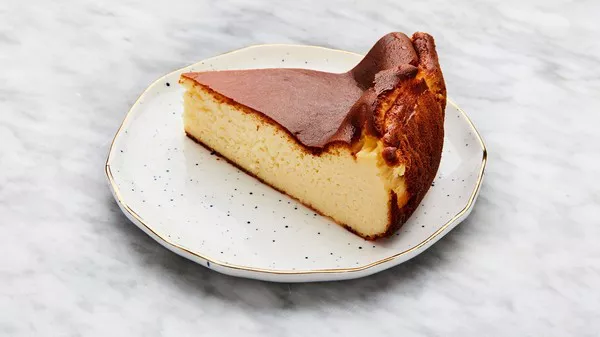Basque cheesecake, also known as “tarta de queso” or “burnt cheesecake,” has taken the dessert world by storm. This unique and decadent dessert originated in the Basque Country, a picturesque region straddling the borders of Spain and France. With its rustic appearance and creamy, caramelized flavor, Basque cheesecake has garnered a loyal following among dessert enthusiasts worldwide. In this article, we delve into the origins, preparation techniques, and taste sensations of this delightful treat.
Origins of Basque Cheesecake
The origins of Basque cheesecake can be traced back to La Viña, a renowned restaurant located in San Sebastián, Spain. In the early 1990s, chef Santiago Rivera created this unconventional version of cheesecake by embracing the simple ingredients available in the kitchen. The goal was to craft a luscious dessert that didn’t require a crust and could be prepared quickly. Little did they know that this experiment would lead to an international sensation.
The Perfect Recipe
Unlike traditional cheesecakes, Basque cheesecake doesn’t rely on a crumbly biscuit base. Instead, it features a caramelized exterior with a delicate custard-like center. The key components of a classic Basque cheesecake include cream cheese, sugar, eggs, heavy cream, and flour. However, the magic lies in the technique of baking it at high temperatures, which creates the distinct burnt and caramelized top while keeping the interior delightfully creamy.
The Baking Process
To prepare a Basque cheesecake, you’ll need to preheat your oven to a high temperature, typically around 220°C (425°F). The high heat leads to rapid browning and caramelization of the top, while the interior remains velvety smooth. The cake is baked in a round cake pan lined with parchment paper to ensure easy removal once cooled.
Customizing Flavors
While the classic Basque cheesecake offers a rich vanilla flavor, creative variations have emerged over time. Chefs and home bakers have experimented with adding hints of citrus zest, chocolate, berries, or even matcha green tea powder to infuse unique flavors into this beloved dessert.
Texture and Taste
The allure of Basque cheesecake lies in its contrasting textures. The burnt and cracked top gives way to a creamy and custard-like center. The brûléed exterior adds a delightful bitterness that balances the sweetness perfectly. With each bite, you experience the velvety-smooth richness of the cream cheese mingling with the caramelized notes, creating a symphony of flavors on your palate.
Serving and Pairing Suggestions
Basque cheesecake is typically served at room temperature or slightly chilled. Its versatility allows for various accompaniments such as fresh berries, raspberry coulis, or a dusting of powdered sugar. For an indulgent twist, try pairing it with a scoop of vanilla ice cream or a drizzle of warm caramel sauce. Additionally, a cup of strong coffee or a glass of crisp dessert wine can enhance the overall dining experience.
Popularity and Global Influence
Over the years, Basque cheesecake has gained immense popularity worldwide. Social media platforms and food blogs have played a significant role in showcasing this delightful dessert to a broader audience. Today, you can find Basque cheesecake on the menus of trendy cafes, patisseries, and fine dining establishments across the globe.
Conclusion
Basque cheesecake has undoubtedly carved a unique niche in the realm of desserts. Its distinct appearance, creamy texture, and harmonious blend of flavors make it a true culinary wonder. Whether you’re a seasoned pastry chef or an aspiring home baker, trying your hand at creating this delightful treat is sure to bring joy and satisfaction. So, why not embark on a gastronomic adventure and indulge in the irresistible delights of Basque cheesecake?

